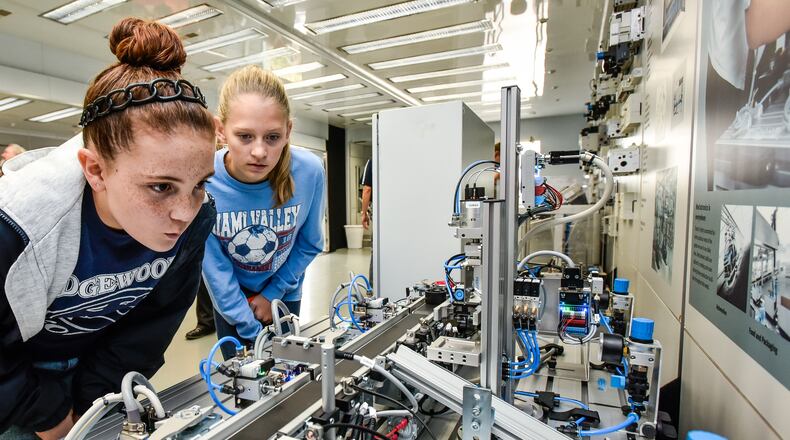Angelia Erbaugh, president of Dayton Region Manufacturers Association, and Phil Ratermann, director of the University of Dayton’s Fastlane consulting office, are already preparing for this year’s events.
They want Oct. 5 — which is Manufacturing Day this year — to be a day to remember.
“We stay true to the original purpose — planting the seed,” Erbaugh said. “The whole premise is, get the kids and educators in, so they can see what contemporary manufacturing is all about.”
When students and teachers see manufacturers today, they might be surprised to find well-lit production floors, with rows of computer-controlled machines neatly arrayed on floors almost clean enough to eat from.
“The dungeons are gone,” Ratermann said. “They see that manufacturing is cool.”
The numbers tell part of the story.
In the first Manufacturing Day observed in Dayton, in 2012, there were 10 company open houses attended by 150 students — which Erbaugh called “a small first go.”
But that “small first go” got bigger quickly.
Last year, the Dayton-area had 64 open houses attended by more than 3,600 area students from 60 schools and 10 home-school groups.
Nationally, 680 events are already planned this year, as of mid-week last week.
“It’s almost been linear,” Ratermann said. “It just goes up every year — boom, boom, boom.”
It isn’t difficult to see why companies want to participate. Manufacturers need trained younger workers right now.
Today, manufacturers are hiring whenever they can and they still need employees. Between July 2017 and July 2018, manufacturers nationally added 327,000 jobs, 262,000 of those in the production of durable goods.
That’s the fastest growth in the manufacturing sector since 1995.
Meanwhile, the median age of the manufacturing workforce is only advancing.
According to the Manufacturing Institute, in the year 2000, the median age of the manufacturing workforce, then at 40.5, was 1.1 years above the median age of the total non-farm workforce nationally.
By the year 2012, however, that age gap had doubled, with the median age in manufacturing being 44.7 years versus 42.3 years for the total non-farm workforce, the institute said.
And a 2015 report from the same institute and Deloitte found that by 2025, 3.5 million manufacturing jobs will have to be filled and the “skills gap” means that 2 million of those jobs will go unfilled.
Locally, the need is more than evident. Just in the past month, there have been calls from Fuyao Glass America in Moraine, Silfex in Springfield and Mahle Behr in Dayton for anywhere from 400 to 100 new employees from each company.
To find those workers, manufacturers want to reach students.
“We’re talking to the schools,” Ratermann said. “The key is, trying to get them to understand.”
Not all students are well suited for college. For some, entry into workforce training is the best path.
“Early high school, late junior high is the sweet spot because they’re not yet really thinking yet about which college (to attend),” he said.
About the Author

